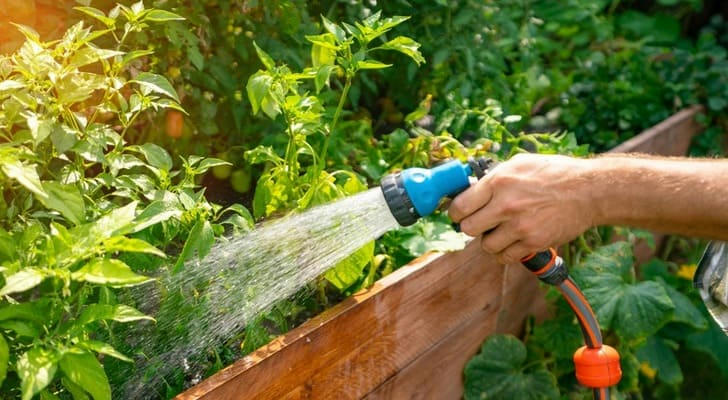Eco-Friendly Living Tips for a Greener Home and Lifestyle

In today’s world, adopting an eco-friendly lifestyle is more important than ever. With the growing need for sustainable practices, it’s essential to take steps to reduce our carbon footprint and positively impact the environment. Embracing eco-friendly habits not only benefits the planet but also enhances our own well-being.
From conserving energy to reducing waste and practicing water conservation, there are countless ways to make our homes and lifestyles more sustainable. In this blog post, we’ll explore practical tips and strategies for eco-friendly living, helping you create a greener future for yourself and generations to come.
Waste Reduction and Recycling
Reducing waste and recycling properly are key components of eco-friendly living. By minimizing waste and ensuring recyclable materials are correctly disposed of, we can significantly lessen our environmental impact.
1. Use Reusable Shopping Bags and Choose Minimal Packaging
One of the simplest ways to reduce waste is by using reusable bags for shopping and opting for products with minimal or recyclable packaging. This small change can drastically cut down on single-use plastics.
2. Compost Organic Waste
Composting food scraps and yard waste keeps these materials out of landfills and creates nutrient-rich soil for gardening. This practice not only reduces waste but also decreases the need for chemical fertilizers.
3. Recycle Properly
Understanding your local recycling guidelines is crucial. Separate recyclables like paper, plastic, glass, and metal, and ensure they’re clean and sorted correctly. Proper recycling helps materials get reused and repurposed instead of ending up in landfills.
Water Conservation
Water conservation is another vital aspect of eco-friendly living. With water scarcity becoming a global concern, reducing water usage can help protect this precious resource.
1. Fix Leaks Promptly
Even small leaks in faucets or toilets can waste a significant amount of water over time. Regularly check for and repair leaks to prevent unnecessary water loss.
2. Install Water-Saving Fixtures and Practice Mindful Usage
Low-flow showerheads and faucets can significantly reduce water consumption. Additionally, simple habits like turning off the tap while brushing your teeth or shaving can make a big difference.
3. Collect Rainwater
Rainwater collection systems, such as rain barrels, are an excellent way to conserve water for non-potable uses like gardening and lawn irrigation. This reduces reliance on treated water and makes use of a natural resource.

Sustainable Purchasing and Green Products
Making sustainable purchasing choices is another important step toward eco-friendly living. By choosing eco-friendly products, we can reduce our environmental impact and support ethical practices.
1. Choose Organic and Locally Sourced Food
Supporting local farmers and choosing organic produce reduces the carbon footprint associated with transportation and chemical-intensive farming. Organic food is also healthier for both you and the environment.
2. Opt for Products Made from Recycled Materials
Look for items made from recycled materials, such as paper products, furniture, and clothing. Supporting the recycling industry helps reduce the demand for virgin materials and conserves natural resources.
3. Support Ethical and Sustainable Brands
Research brands that prioritize ethical and sustainable practices. Look for certifications like Fair Trade, Rainforest Alliance, or B Corp, which indicate environmentally and socially responsible production.
4. Use Eco-Friendly Cleaning and Personal Care Products
Many conventional cleaning and personal care products contain harmful chemicals that can pollute waterways and harm your health. Switch to biodegradable, non-toxic alternatives made from natural ingredients.
Reducing Energy Consumption
Cutting down on energy use is a crucial part of reducing our environmental footprint. Here are some simple ways to conserve energy and live more sustainably.
1. Use Energy-Efficient Appliances and Lightbulbs
When purchasing new appliances or lighting, opt for ENERGY STAR-rated products. LED and CFL lightbulbs use significantly less energy than traditional incandescent bulbs.
2. Adjust Thermostats and Turn Off Lights
Set your thermostat to moderate temperatures to reduce heating and cooling costs. Additionally, turn off lights when leaving a room to avoid unnecessary energy consumption.
3. Unplug Devices and Use Sleep Settings
Unplug electronics like chargers and appliances when not in use to prevent phantom energy drain. Enable sleep settings on computers and other devices to reduce inactive power usage.
4. Utilize Natural Lighting, Ventilation, and Solar Power
Open windows or skylights to let in natural light and fresh air during temperate weather. Consider installing solar panels to harness renewable energy and reduce reliance on fossil fuels.
5. Improve Home Insulation
Sealing drafts and improving insulation can significantly reduce the energy needed to heat and cool your home. Weatherstripping, caulking, and insulation upgrades are cost-effective ways to save energy.
Green Dreams, Sustainable Realities
Adopting an eco-friendly lifestyle is essential for the health of our planet and future generations. By implementing the tips discussed in this post, we can significantly reduce our environmental impact and contribute to a greener home and lifestyle.
Energy conservation, waste reduction, water conservation, and sustainable purchasing are all critical aspects of eco-friendly living. Every small change we make in our daily lives can have a meaningful positive impact on the environment.
Remember, creating a sustainable future requires collective effort. Encourage your friends, family, and community to join you in adopting eco-friendly practices. Together, we can make a difference and build a healthier, more sustainable world for everyone.

